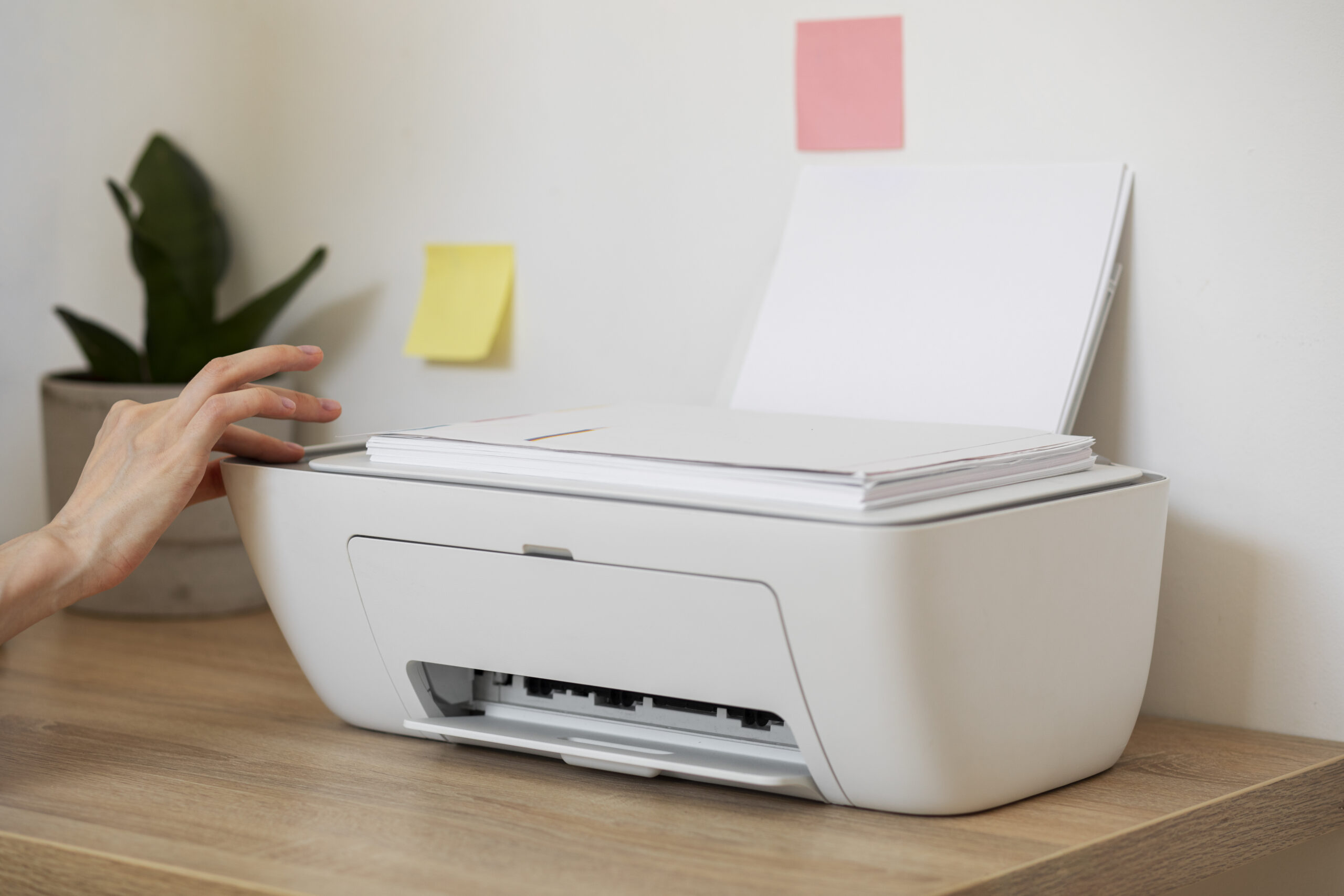Cost-Effective Printing: Practical Ways to Cut Down Expenses

Introduction
Printing is one of those office and home tasks that feels straightforward but quickly becomes expensive if not managed properly. Between the cost of ink or toner, paper, electricity, and regular maintenance, the overall expenses can spiral without you realising it. Many businesses spend thousands each year on printing, while households often feel the pinch of high cartridge costs.
This long-form guide, packed with over 6000 words of practical advice, dives deep into every aspect of cost-effective printing. Whether you’re a home user who occasionally prints school projects or a business owner managing an office with multiple printers, you’ll find actionable strategies to cut costs without compromising quality. From choosing the right hardware to optimising settings, reducing waste, and adopting smart alternatives, this is your complete roadmap to printing more efficiently.
Note: While printing is sometimes unavoidable, the most cost-effective print is the one you don’t make. Always consider whether a digital alternative can achieve the same purpose before hitting “Print”.
Why Printing Costs Add Up Quickly
To understand how to save, you first need to know where the expenses come from. Printing costs are not just about buying a printer. They include ongoing and often hidden factors:
- Ink and toner: Often more expensive per millilitre than luxury perfumes, cartridges are the biggest recurring cost.
- Paper: While cheaper than ink, wasted sheets, reprints due to errors, and premium paper options increase spending.
- Electricity: Printers consume power not only while printing but also in standby modes.
- Maintenance and repairs: Frequent jams, clogged printheads, or worn rollers require time and sometimes costly servicing.
- Software and licensing: Some enterprise environments pay extra for managed print software.
Once you add all these together, the true cost of printing can be staggering. But the good news is that every one of these areas offers opportunities for savings.

Practical Methods to Cut Down Printing Costs
Here we explore practical, tested strategies for reducing expenses without losing print quality. These methods apply across home and office environments, and we’ll break them down step by step.
1. Optimise Your Printer Settings
The easiest savings come from configuring your printer correctly. Many people print in “default” mode, which often means full-colour, high resolution, and single-sided pages. But you can save significantly by changing a few settings:
- Use draft mode: For documents where high quality isn’t necessary, draft mode reduces ink usage considerably.
- Print in grayscale: Avoid colour unless it’s absolutely necessary. Colour ink is typically much more expensive.
- Enable duplex printing: Double-sided printing can cut paper costs in half.
Tip: Set these preferences as defaults so you don’t need to change them every time.
2. Choose the Right Printer Type
The hardware you choose determines long-term expenses. Many people buy cheap printers but end up paying much more in cartridges. In reality, a slightly more expensive printer with cheaper per-page costs is far more economical in the long run.
- Inkjet vs Laser: Inkjets have a lower upfront cost but expensive ink. Lasers are costlier upfront but cheaper per page.
- EcoTank and refillable models: These use large refillable tanks, dramatically reducing ink costs.
- Monochrome vs Colour: If you mostly print text, a monochrome printer is far cheaper.
Note: Always check the “cost per page” metric before buying a printer. This is the true measure of long-term value.
3. Refill and Reuse Cartridges Safely
Cartridge refills or compatible alternatives can be a fraction of the price of OEM (original equipment manufacturer) cartridges. However, quality varies, and using unreliable refills can damage your printer. Choose trusted suppliers, and ensure cartridges are stored properly.
4. Use Cloud Printing and Digital Alternatives
Sometimes the best way to save on printing is not to print at all. With cloud storage, e-signature platforms, and online collaboration tools, many printing tasks can be replaced by digital workflows. For example:
- Share PDFs via email instead of printing multiple copies.
- Use digital signatures instead of printing, signing, and scanning documents.
- Employ online collaboration platforms for real-time editing.
5. Share Printers in Offices
Instead of giving every desk a printer, centralise them. Shared printers reduce idle time and consumable waste, while also simplifying maintenance. Managed print services can further track usage and optimise performance.
6. Buy Supplies in Bulk or Subscribe
Buying paper, cartridges, and toner in bulk reduces per-unit costs. Many vendors also offer subscription services where ink is delivered automatically when you’re running low, often at discounted rates.
7. Maintain Your Printer Regularly
A well-maintained printer wastes less ink and paper. Regular cleaning of printheads, rollers, and firmware updates ensure efficiency. A clogged or dirty printer often produces misprints that require reprints — doubling your costs.
Case Studies: Real-World Examples of Cost-Effective Printing
Abstract concepts become clearer when applied in the real world. Let’s explore how different environments have implemented cost-saving strategies.
Case Study 1: Small Business Office
A marketing agency with 15 employees was struggling with high cartridge expenses. By switching from individual inkjet printers to a shared monochrome laser printer with duplex capability, they cut printing expenses by 60% in the first year. Bulk purchasing of toner further reduced costs.
Case Study 2: Educational Institution
A college installed managed print services (MPS) across its campus. Students were assigned print quotas, and all printers defaulted to double-sided, grayscale settings. The result? Paper usage dropped by 40% within a semester, and unnecessary colour prints were eliminated.
Case Study 3: Home User
A freelance writer printing draft manuscripts switched to a refillable EcoTank model. Instead of replacing cartridges every month, she refilled tanks quarterly at a fraction of the cost. Over three years, she saved nearly £900 in ink expenses.

Troubleshooting Costly Printing Habits
Even the best strategies fail if old habits creep in. Here’s a quick reference table to diagnose where costs are creeping up and what to do about them.
| Problem | Cost Impact | Solution |
|---|---|---|
| Employees print in colour by default | High ink usage | Set printers to greyscale as default |
| Frequent paper jams | Wasted paper and reprints | Regularly clean rollers and use good-quality paper |
| Leaving printers on overnight | Unnecessary energy costs | Enable automatic sleep mode or switch off |
| Printing emails | Unnecessary paper use | Encourage digital archiving and reading |
| Buying OEM cartridges only | High recurring expenses | Use compatible cartridges or refillable models |
Advanced Tips for Enterprises and Power Users
Larger organisations have unique opportunities to save on printing due to their scale. Here are some advanced strategies:
1. Managed Print Services (MPS)
MPS providers audit your printing environment, replace inefficient devices, and monitor usage patterns. They charge per page, which can streamline budgeting and reduce hidden costs.
2. Secure Printing with Release Codes
Instead of jobs printing automatically, they remain in a queue until released with a PIN or ID card. This prevents waste from forgotten jobs and protects sensitive data.
3. Virtualisation and Cloud Printing
Instead of running dozens of print servers, enterprises can host virtualised print services or use cloud-based printing platforms, reducing infrastructure and maintenance costs.
4. Energy Audits
Enterprises often overlook the electricity consumed by fleets of printers. Auditing power usage and enabling aggressive sleep modes can reduce annual energy costs significantly.
Frequently Asked Questions
Is printing at home cheaper than using a print shop?
It depends on your volume. For occasional prints, a print shop may be cheaper since you avoid cartridge costs and maintenance. But if you print regularly, owning a cost-effective printer (like a laser or EcoTank) is usually more economical.
How do refillable printers compare to cartridge models?
Refillable printers have a higher upfront cost but drastically lower cost per page. Over time, especially for heavy users, refillable models save hundreds or even thousands in ink expenses compared to cartridge-based printers.
Do compatible cartridges damage printers?
Not if purchased from a reputable supplier. Poor-quality compatibles may clog printheads or leak, but good suppliers produce cartridges meeting or exceeding OEM standards. Always read reviews and choose trusted vendors.
What’s the cheapest type of printer to run?
For black-and-white text, monochrome laser printers are cheapest. For mixed colour usage, EcoTank or refillable ink tank printers are the most cost-effective over time.
How do I reduce wasted prints in an office?
Enable secure release printing, set defaults to duplex and greyscale, and use quotas or reporting to track employee usage. Educating staff about costs also reduces wasteful behaviour.
Are subscription ink services worth it?
They can be if your printing is consistent and moderate. Subscriptions save you from emergency purchases at retail prices. However, for very light or very heavy usage, buying your own supplies may be cheaper.
Conclusion
Cost-effective printing is about smart choices at every level: from the printer you buy to the way you configure settings, maintain devices, and encourage responsible habits. While ink and toner remain expensive commodities, careful management can drastically reduce your overall spend.
By adopting digital alternatives, sharing printers, choosing the right models, and avoiding waste, households and businesses alike can cut printing expenses without sacrificing productivity. The strategies in this guide give you the tools to print smarter, not costlier.
Remember: every page you avoid printing is the biggest saving of all. Think before you print — your wallet and the environment will thank you.
Guide Axis provides brand-neutral education only. No remote access, repairs, or warranty services.
